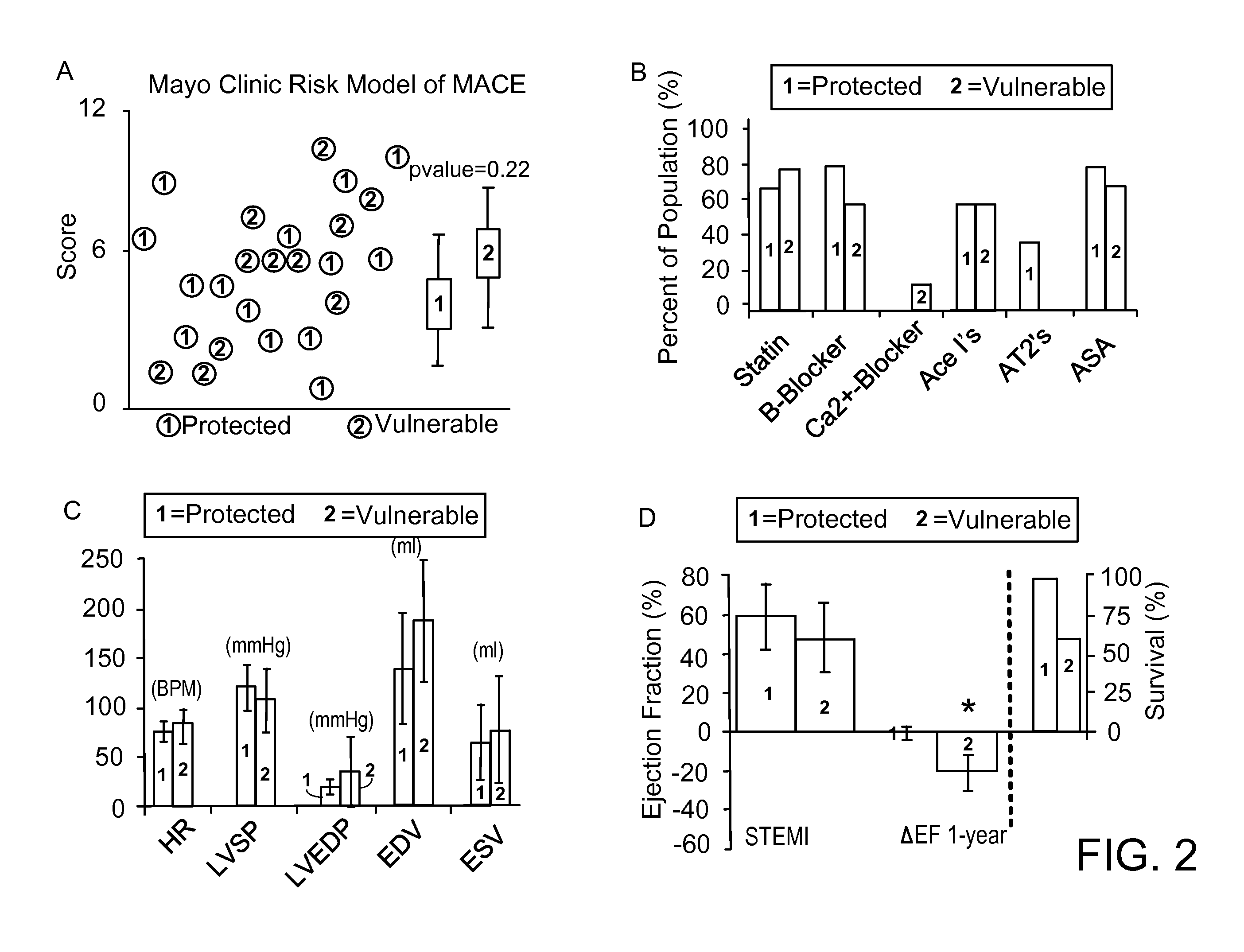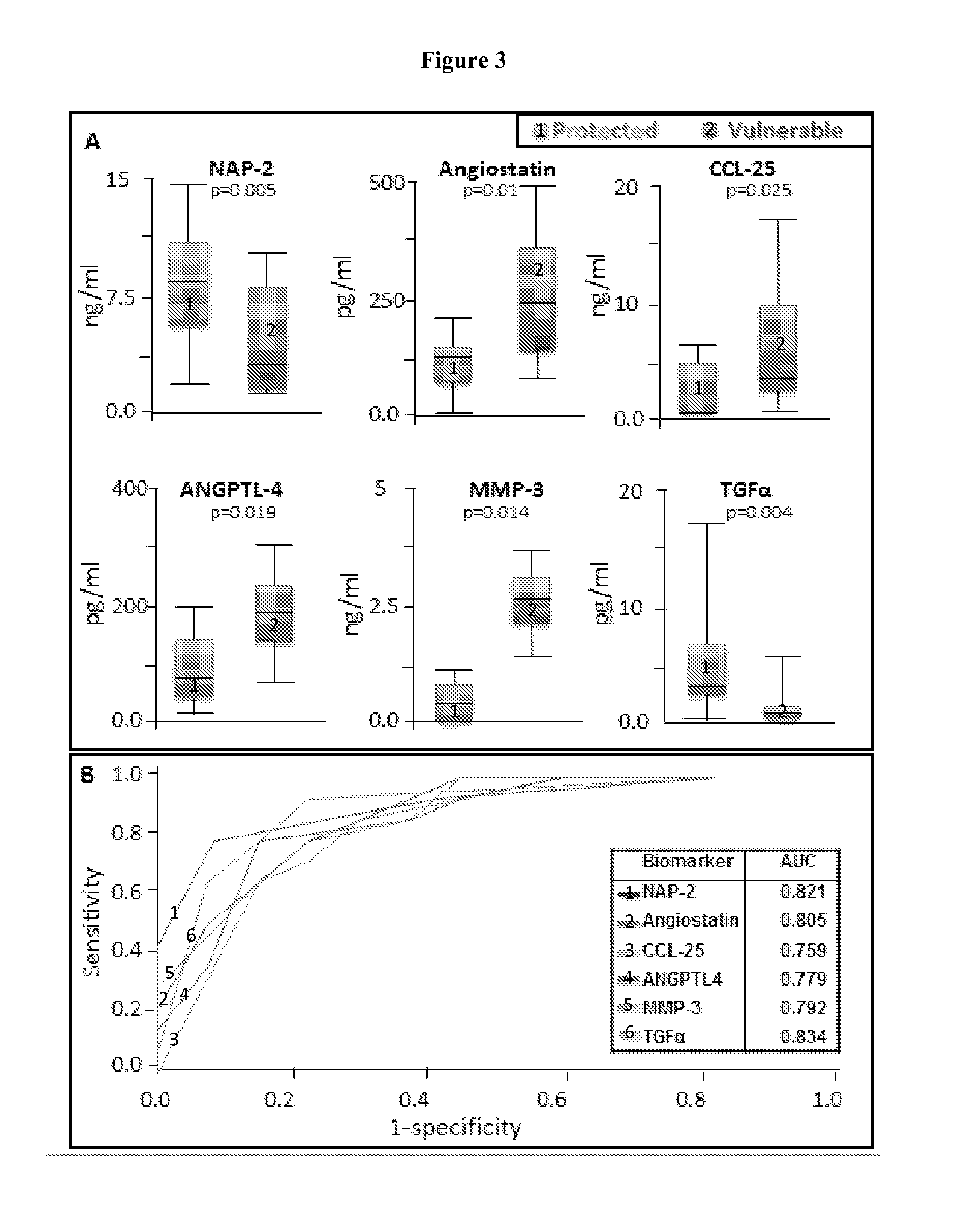Reducing the risk of major adverse cardiac events
risk reduction technology, applied in the direction of transferases, immunological disorders, instruments, etc., can solve the problem that patients harbor a significant long-term risk of experiencing a major adverse cardiac even
- Summary
- Abstract
- Description
- Claims
- Application Information
AI Technical Summary
Benefits of technology
Problems solved by technology
Method used
Image
Examples
example 1
Differential Coronary Serum Proteome Signature in Humans Suffering from Acute Myocardial Infarction Identifies Vulnerable Patients
Study Design
[0048]Patients between 40 and 82 years of age underwent coronary thrombus aspirate prior to PCI for STEMI. Fresh coronary aspirates were stored in EDTA tubes and centrifuged at 4° C. Serum supernatant was collected, treated with protease inhibitor, split into working aliquots, flash frozen in liquid nitrogen, and stored at −80° C. within 60 minutes of coronary sampling. The Mayo Clinic Risk Model of MACE and TIMI scoring were utilized for stratification at the time of myocardial infarction, and patients identified as non-high risk were enrolled and followed (n=25). Those suffering from death, recurrent infarction, or heart failure (MACE) within a two-year follow-up were categorized as vulnerable (n=11), while those who did not were categorized as protected (n=14).
Proteomics Evaluation
[0049]Stored coronary serum samples were thawed only once an...
PUM
| Property | Measurement | Unit |
|---|---|---|
| temperature | aaaaa | aaaaa |
| concentrations | aaaaa | aaaaa |
| concentrations | aaaaa | aaaaa |
Abstract
Description
Claims
Application Information
 Login to View More
Login to View More - R&D
- Intellectual Property
- Life Sciences
- Materials
- Tech Scout
- Unparalleled Data Quality
- Higher Quality Content
- 60% Fewer Hallucinations
Browse by: Latest US Patents, China's latest patents, Technical Efficacy Thesaurus, Application Domain, Technology Topic, Popular Technical Reports.
© 2025 PatSnap. All rights reserved.Legal|Privacy policy|Modern Slavery Act Transparency Statement|Sitemap|About US| Contact US: help@patsnap.com



